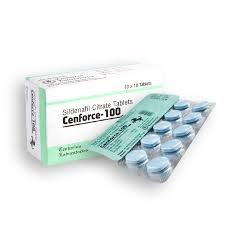Unlock the Power of Pain Relief with Tramadol 100 MG: Dosage, Side Effects, and More!
The regular experience of pain can have a big impact on one's quality of life. Whether it is chronic pain or only occasional discomfort, it can impede movement, disrupt everyday life, and lead to emotional anguish. Tramadol 100 mg is one of the various medicines for pain relief that are fortunately available. The advantages of Tramadol 100 mg, including its dose, adverse effects, and more, will be discussed in this article.
What is Tramadol 100 mg?
The pharmacological family known as opioid analgesics includes the prescription medicine tramadol 100 mg. It is employed to treat moderate to severe pain, including that brought on by trauma, surgery, or long-term illnesses like arthritis. Tramadol reduces the perception of pain by attaching to opioid receptors in the brain and spinal cord.
Dosage of Tramadol: 100 mg
Tramadol 100 mg is available in several forms, including tablets, capsules, and injections. The dosage will depend on several factors, such as the severity of the pain, the individual's medical history, and other medications they may be taking. The recommended starting dose for most adults is 50–100 mg, taken every four to six hours as needed. The maximum daily dose should not exceed 400 mg. It is important to follow the prescribed dosage and duration of treatment, as prolonged use can lead to dependence and addiction.
Benefits of Tramadol 100 mg
Effective pain relief:
For many people, tramadol 100 mg is an efficient pain reliever. It functions by attaching to opioid receptors in the spinal cord and brain, which can lessen the perception of pain. Treatment of moderate to severe pain, such as that brought on by surgery or long-term illnesses like arthritis, is made particularly successful by this method.
Rapid onset:
Many people begin to feel better an hour after taking tramadol 100 mg, which has a quick start of effect. For those who want prompt relief from pain and discomfort, this can be especially helpful.
Versatile use:
A flexible drug that can be used to treat a range of pain conditions is tramadol 100 mg. Pain from operations, injuries, and chronic illnesses like arthritis are all often treated with it.
Well-tolerated:
Most people normally tolerate tramadol 100 mg nicely. Constipation, nausea, and dizziness are the most frequent adverse effects, all of which usually go away on their own. If you suffer any side effects or have any worries about taking the drug, it is crucial to discuss these with your doctor.
Lower risk of addiction:
Compared to other opioid drugs, tramadol 100 mg has a lower risk of addiction. Even so, it's crucial to adhere to the recommended dosage and course of therapy because continued use might result in dependence and addiction.
Side Effects of Tramadol 100 mg
Tramadol 100 mg Tablet, like many drugs, might have negative side effects. Headache, nausea, constipation, and dizziness are among the most typical adverse reactions. Furthermore, sleepiness, dry lips, and sweating are possible adverse effects. Tramadol occasionally produces more severe adverse effects, like seizures or allergic reactions. If you suffer any side effects or have any worries about taking the drug, it is crucial to discuss these with your doctor.
Conclusion:
An effective painkiller that can help with moderate to severe pain is tramadol 100 mg. Compared to other opioid drugs; it has a faster start of action, is generally well tolerated, and has a lower risk of addiction. But it's crucial to adhere to the recommended dosage and course of therapy. You should also consult your doctor if you experience any negative side effects or have any questions. With



Comments
Post a Comment